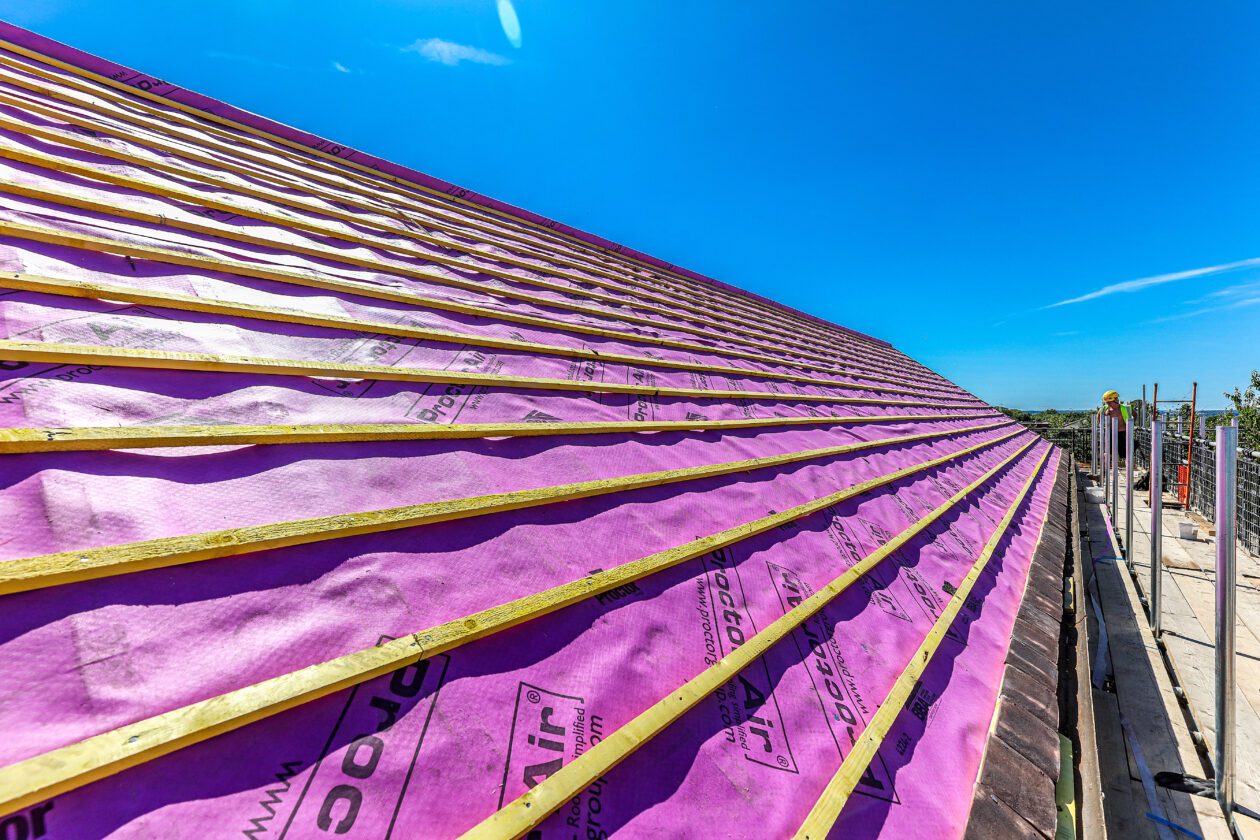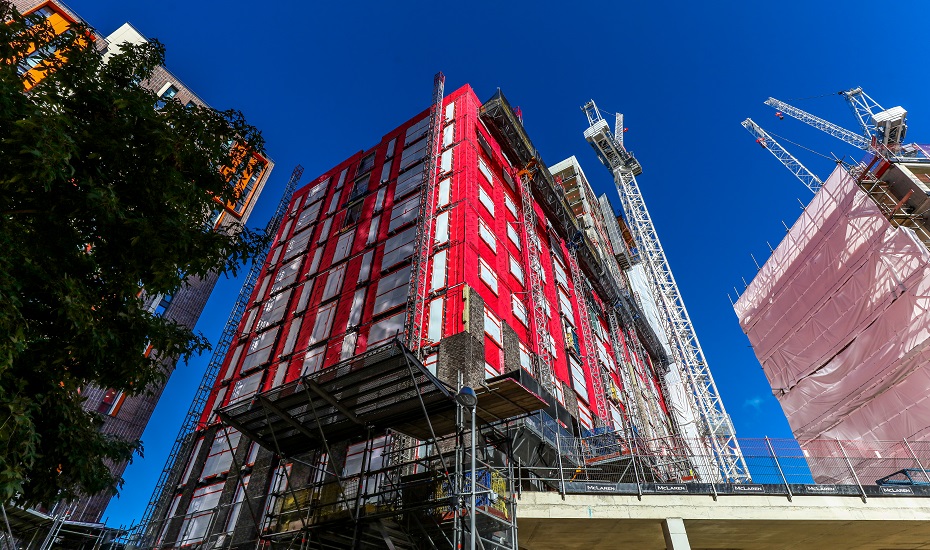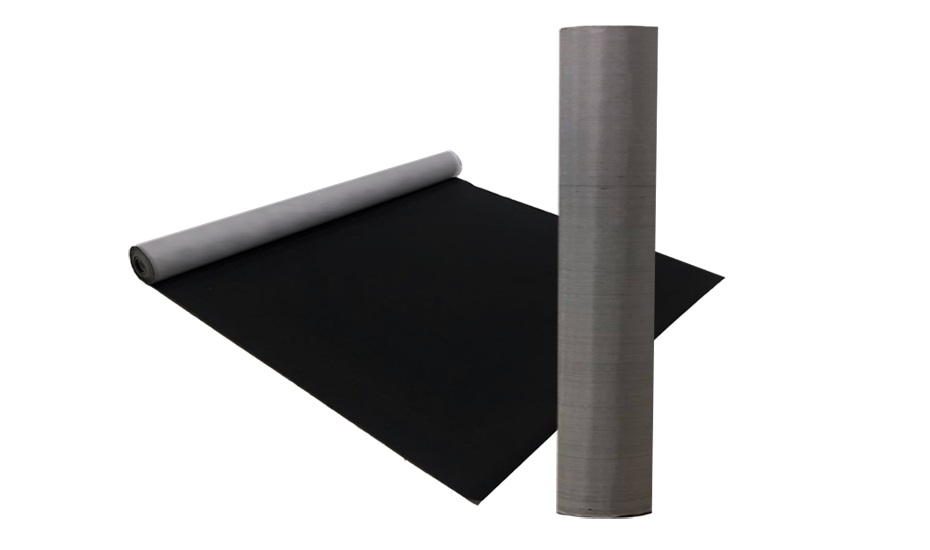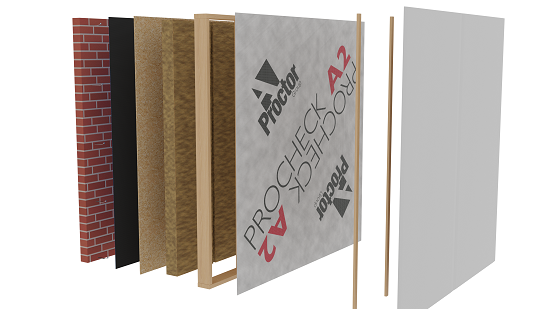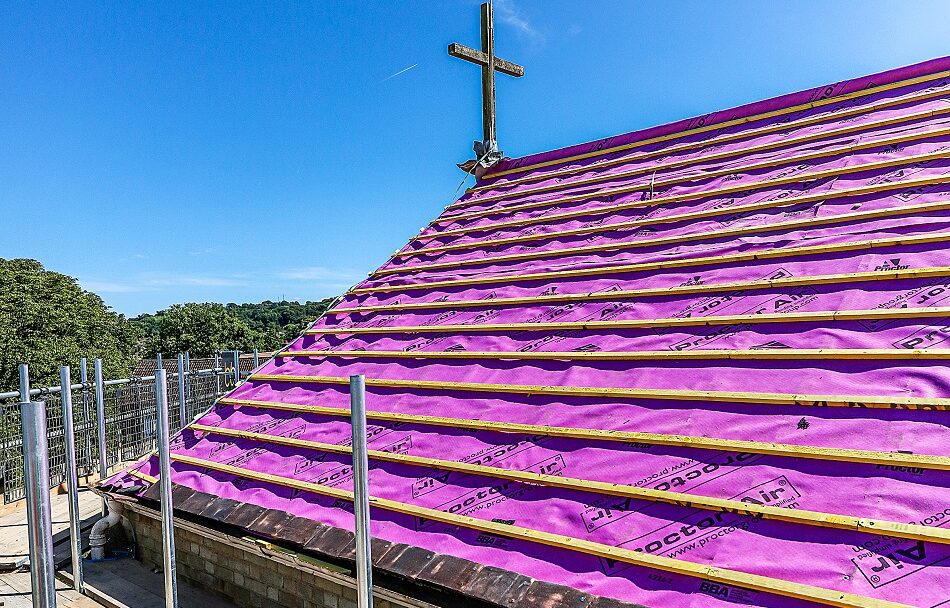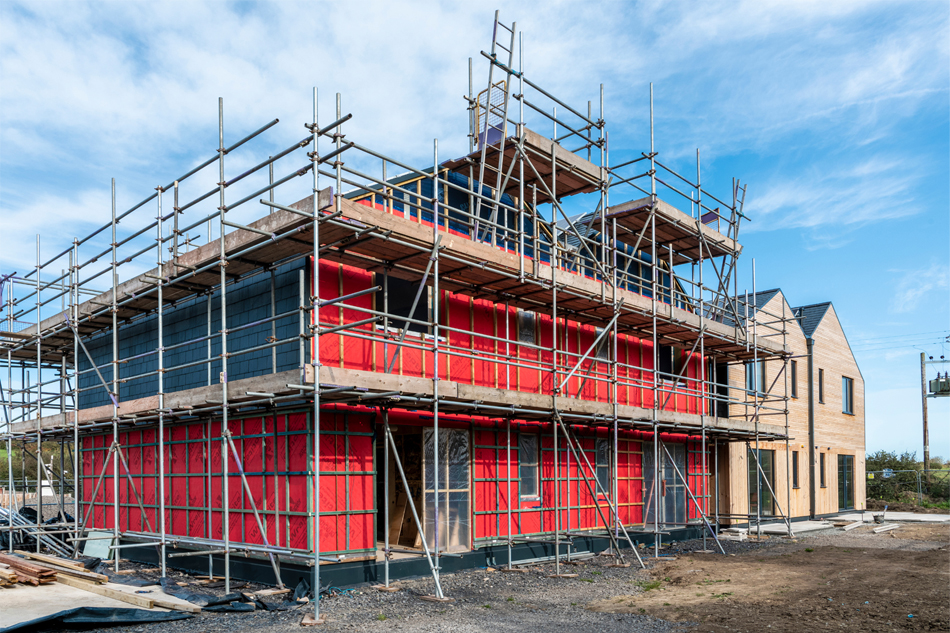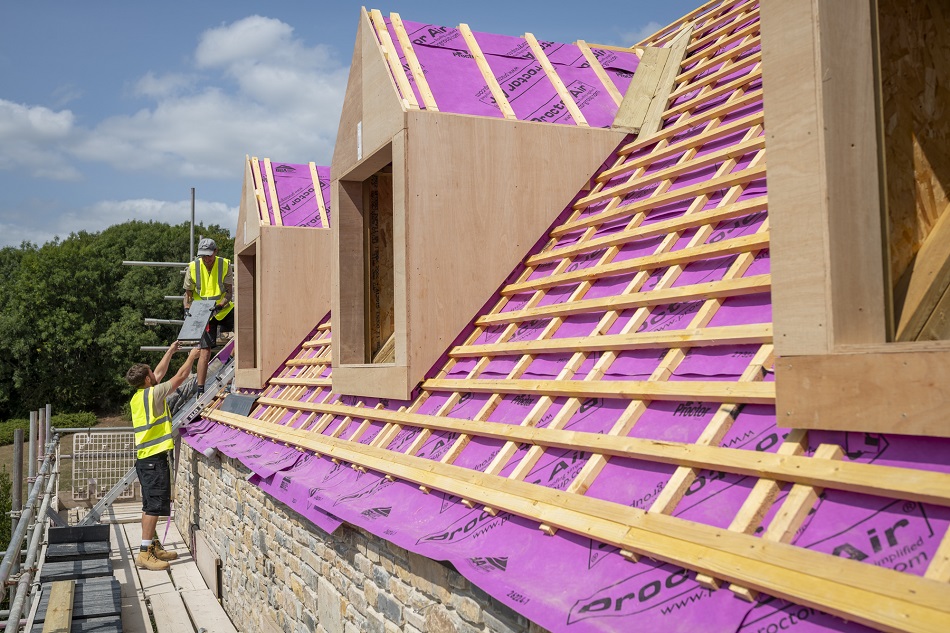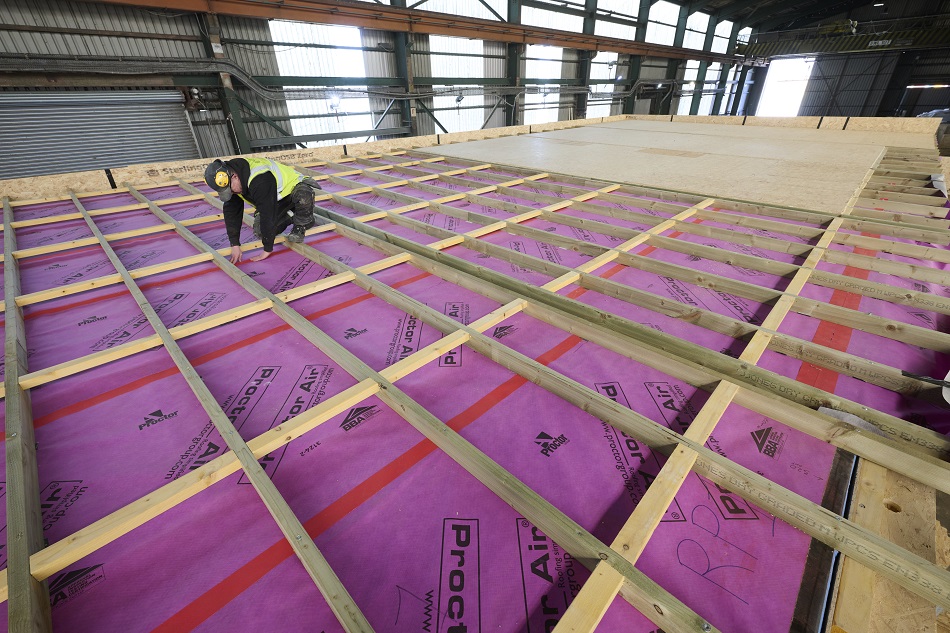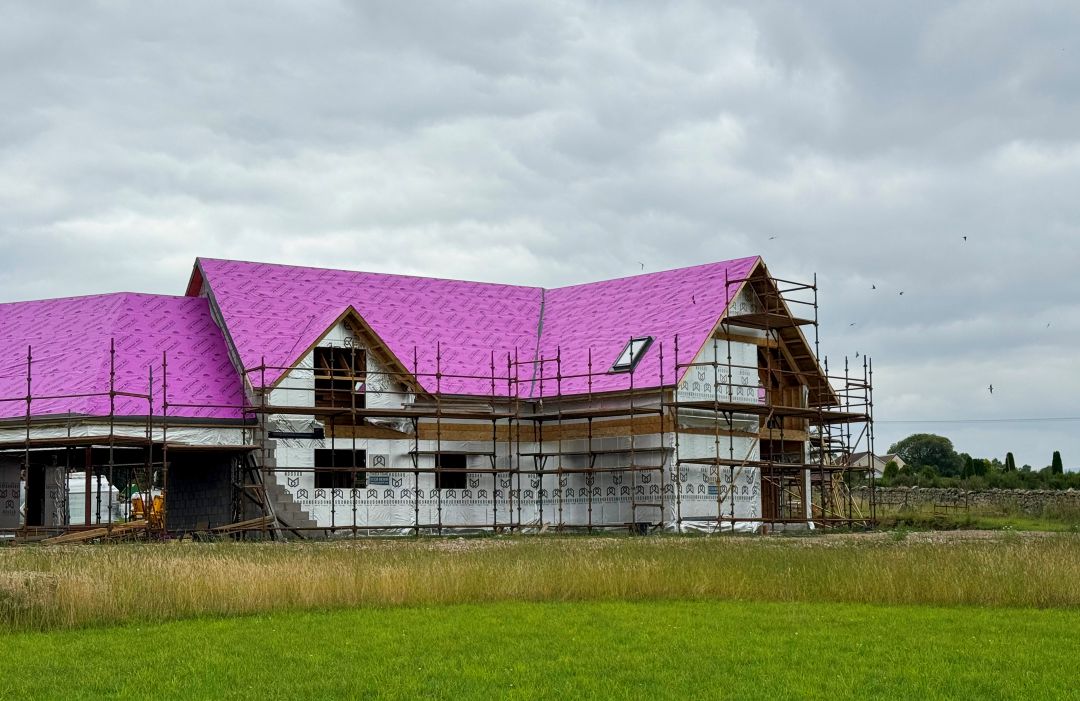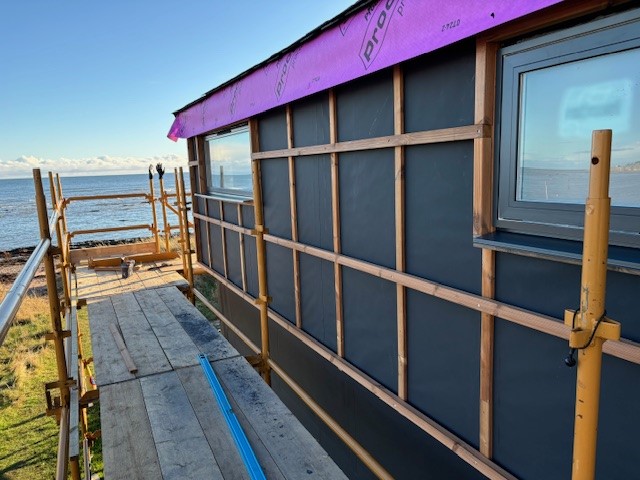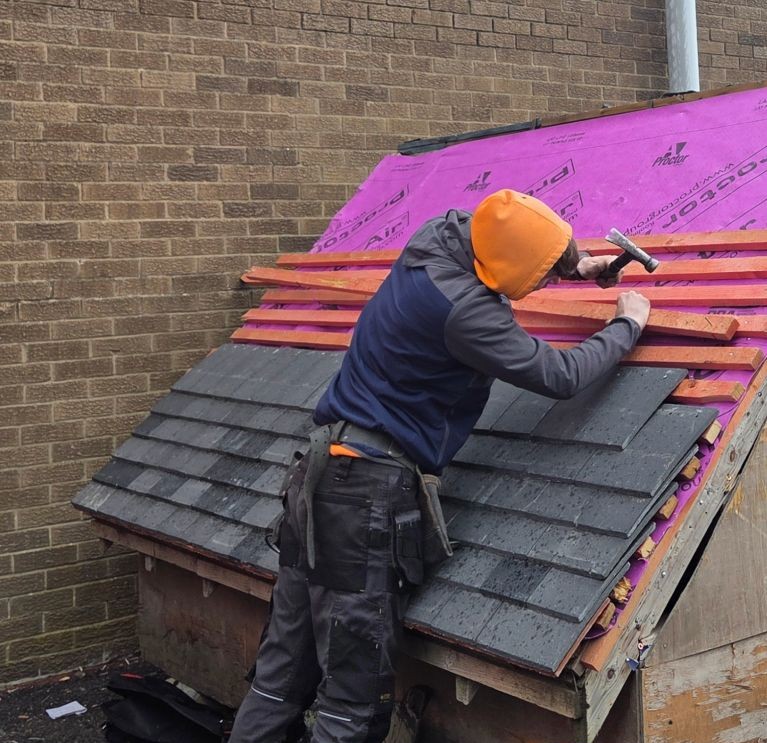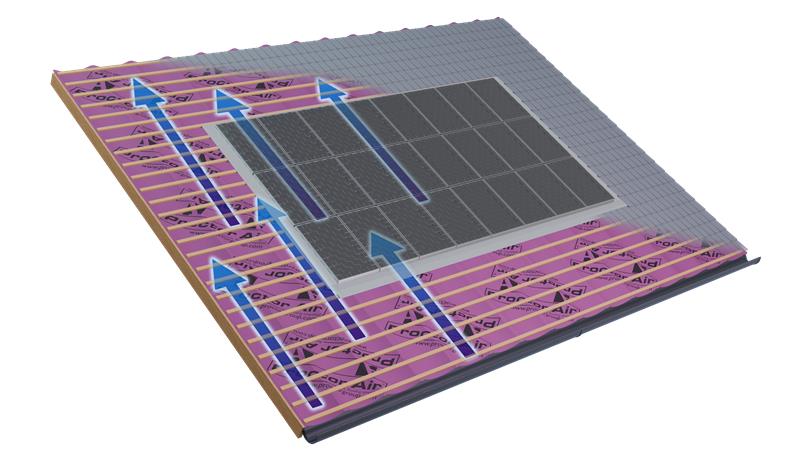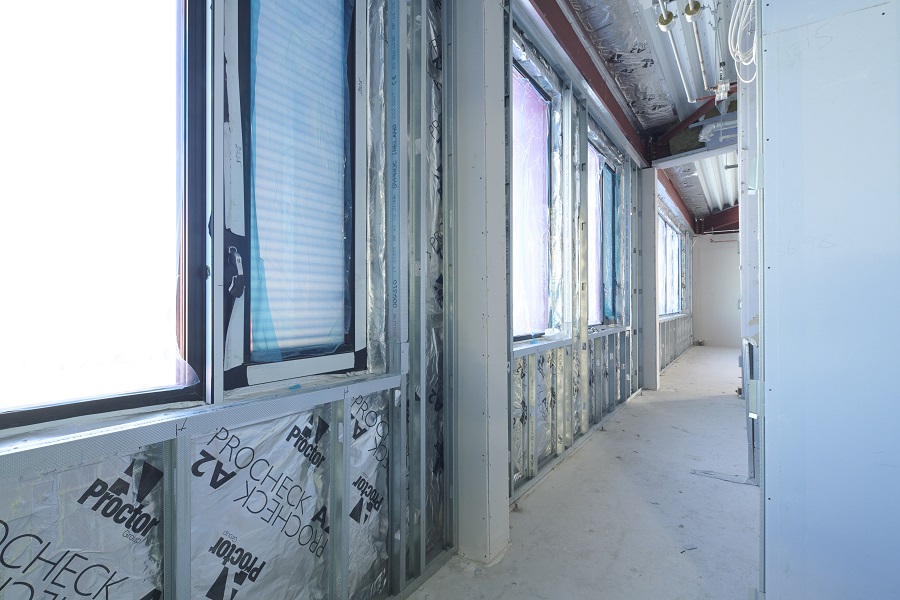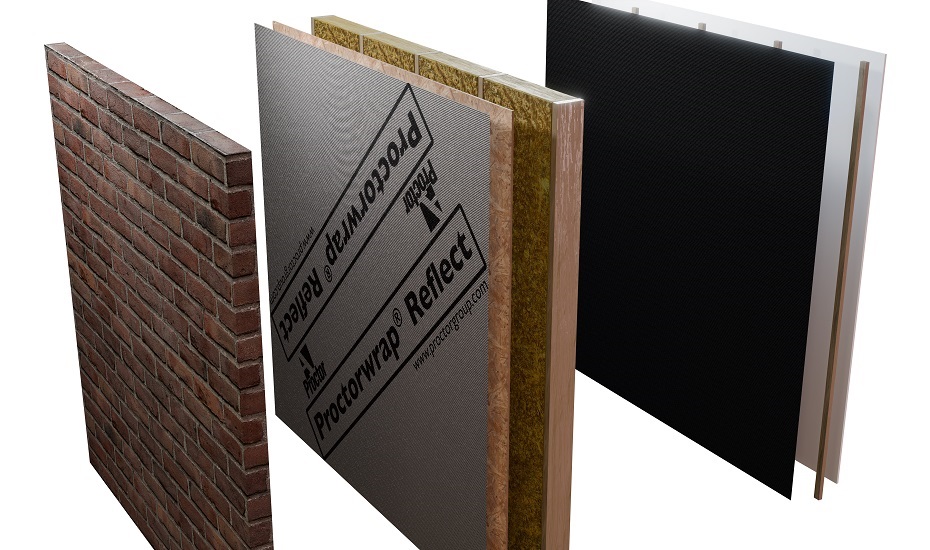Practical questions about a pitched roof underlay that matter to installers include: does it tear easily? Will it cut well, or do the edges fray when you run a knife through it? Andrew Speakman described how his installers found Proctor Air to be “lightweight but strong.”
The headline performance characteristics of Proctor Air are usually its low vapour resistance and its air permeability, but there are other characteristics that make a big difference to installing it on site. For example, in an assessment of the fabric’s strength, Proctor Air achieves an excellent Mullen burst strength result. This helps it to resist normal roof installation loads. In addition, an assessment of its slip resistance shows it has a high coefficient of friction, which increases safety during the installation of the covering as part of normal safe working practices.
Of course, a pitched roof underlay has to deliver its promised performance for the building as well. Proctor Air is an air permeable, low resistance (APLR) membrane.
• Air permeability provides consistent ventilation and a more uniform flow of air from a cold roof space compared to normal vents. It also means that no vapour control layer is required in the ceiling.
• As one of the highest performing vapour permeable membranes available, Proctor Air allows the passage of moisture vapour from the roof space. It has an Sd value of 0.015m and a vapour resistance of 0.075 MNs/g.
This combination of features reduces condensation risk in the roof space while avoiding the need to install vents in the roof – which is especially useful on heritage projects and existing roofs.
“The air permeability of Proctor Air makes it very versatile for us,” said Andrew Speakman. “St Mary’s Church featured a traditional pantile on a mortar-bedded creasing tile eave. Proctor Air gave us a breathable roof without sacrificing the traditional elements, and while maintaining the original appearance of the building.”
